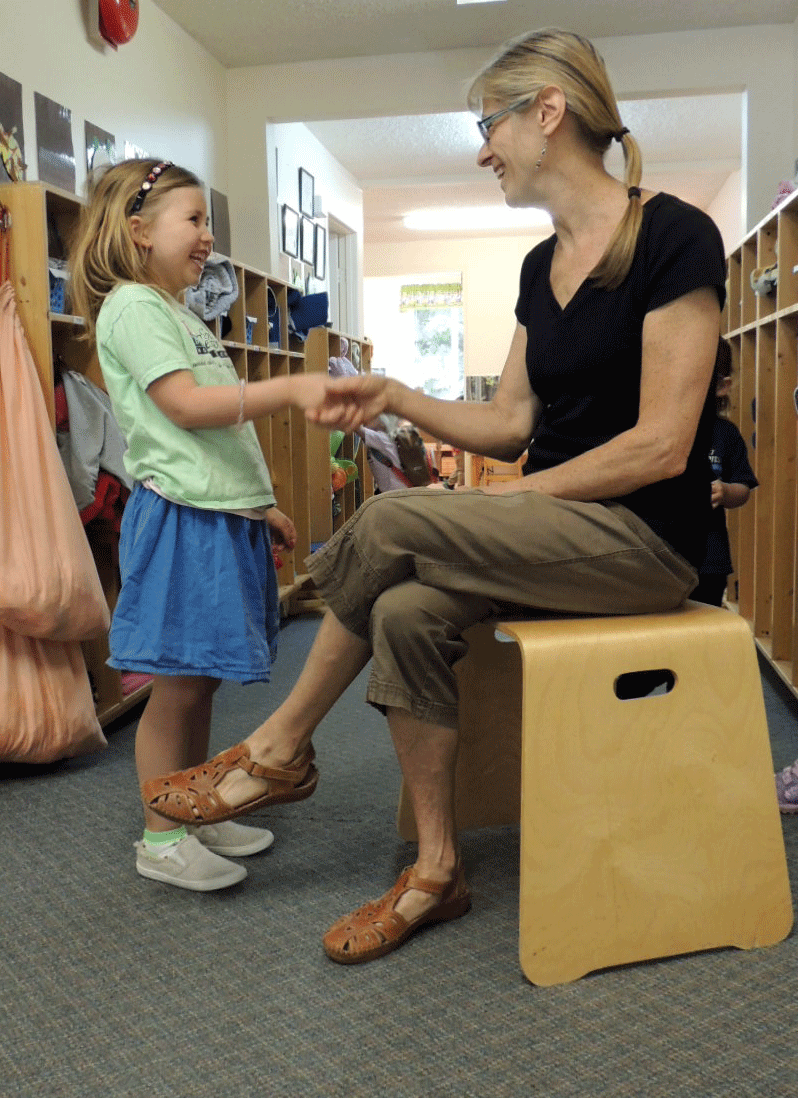Consider, for a moment, the start of each school day to be a new beginning. Each morning is a clean slate. Each action you choose can potentially have a powerful and meaningful impact on the day.
Punctuality is a good place to begin; it opens up endless avenues for growth and learning.
When a child consistently arrives at school on time, she/he benefits from the following opportunities:
- To be greeted by the teacher with a handshake and a few words. This simple ritual and personal contact offers the safe and caring transfer of the child from parent to teacher, opening up the opportunity to form attachments and develop new relationships.
- To socialize with peers in the cubby area at arrival time. The sharing of stories from home and the weekend builds communication skills and fosters friendships.
- To get ready by her/himself, including removing and hanging up outdoor clothes and putting on indoor shoes. The children offer each other help and teach their skills in zipping, buttoning, lacing, etc. The independence and cooperation shared as a group empowers the children.
- To transition successfully from home to the classroom environment. Children possess great empathy and are able to console one another on a direct personal level. It might be a simple gesture of one child offering a kind word to another child who is sad, or an invitation by an older child to work with a new student.
- To concentrate and focus on the work with the materials. Children who enter the classroom alongside their peers are more likely to engage and interact in a calm and natural manner, more at ease and confident with their school activities.
Each new day at a Montessori school begins with a ritual unique to the educational method:
The teacher sits on her stool at the school door and greets each child with a handshake, eye contact and a few words. It is a brief exchange of pleasantries during which the teacher might ask a question about the child’s weekend, or pay a compliment on a new haircut. The children gradually transition from the cubby area to the classroom and begin their day by choosing their first work.
To the casual observer, the morning greeting between teacher and child can appear a mere formality. For the educator, there is another important objective: To collect the child. The goal is to make a connection in a friendly way by attracting the child’s eyes, evoking a smile, and, if possible, eliciting a nod. This is the first step in bridging the separation from family. There can now be a transfer of relationship from the parent to the teacher. The child can begin to trust and feel safe in a new environment.
In Hold On to Your Kids, Gordon Neufeld and Gabor Maté discuss the importance of the attachment ritual. They refer to it as the “collecting dance,” a name borrowed from the ancient dance of many cultures that is used to connect people with those they care about. Today, it has become necessary to take this intuitive process to a conscious level as the need for engaging children’s primitive attachment instincts becomes critical in our modern society.
A primary natural instinct of human survival for humans, both young and old, is to resist and be wary of someone who is a stranger to them. A small and vulnerable child will therefore not engage in the learning process until she experiences feelings of emotional and physical security. It becomes imperative then, that an environment of trust, respect, balance and equality is established.
For the Montessori educator, the morning greeting and handshake is an important first step toward this fostering of a safe and secure relationship with her student. This is when the learning process can begin to take place.

